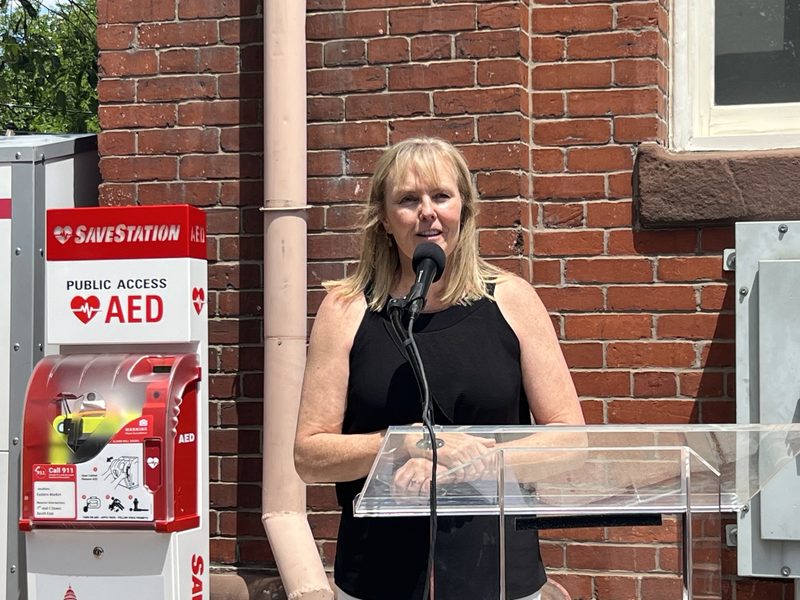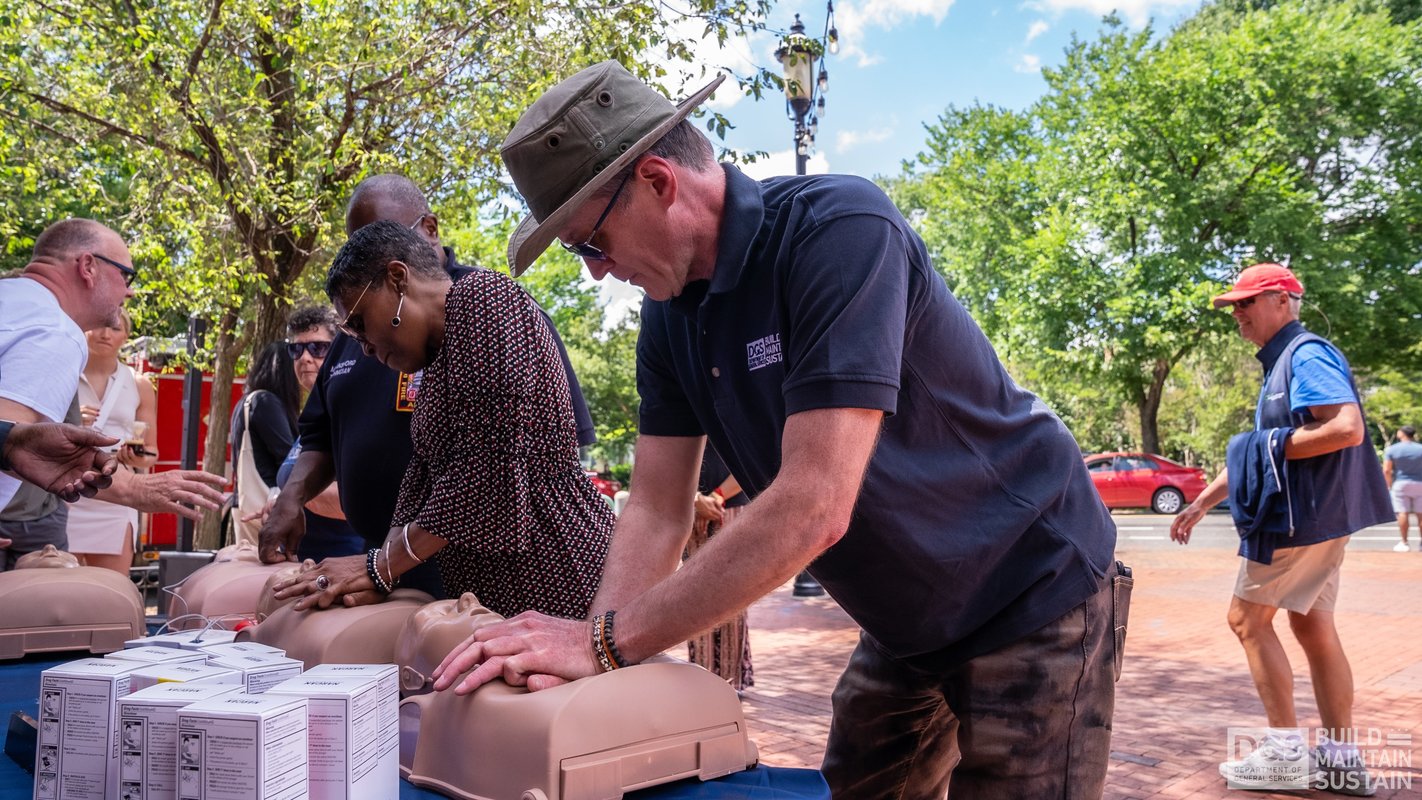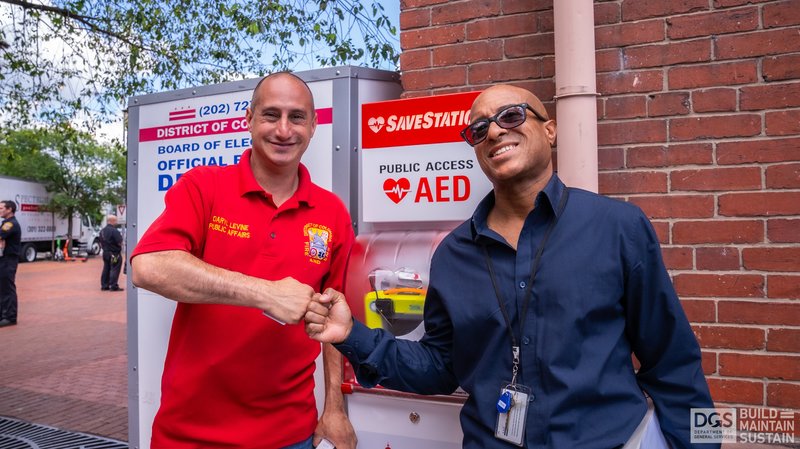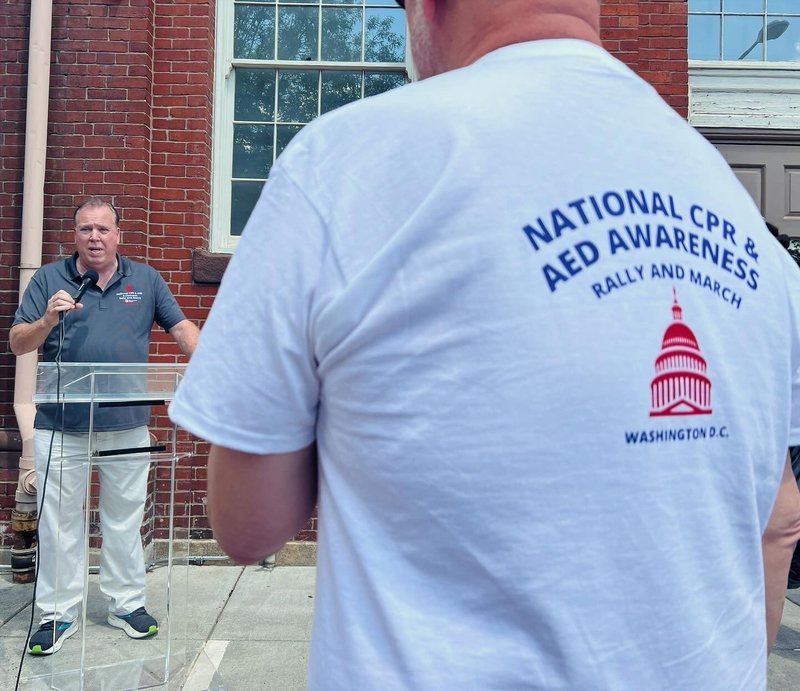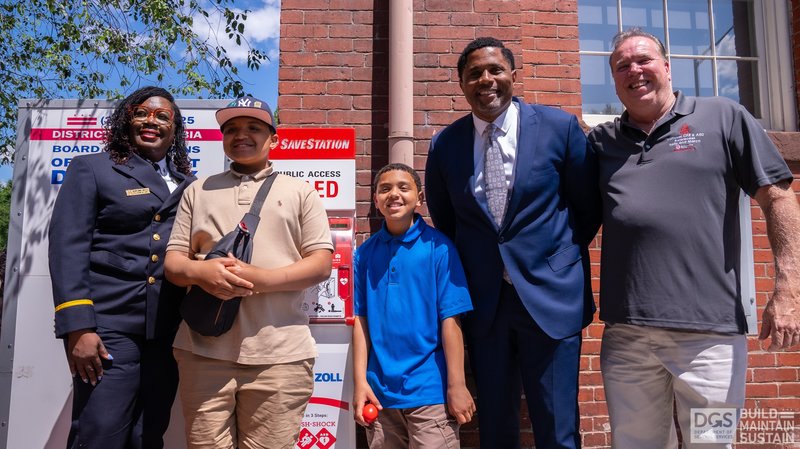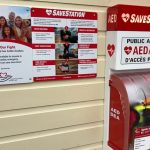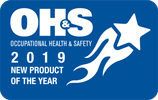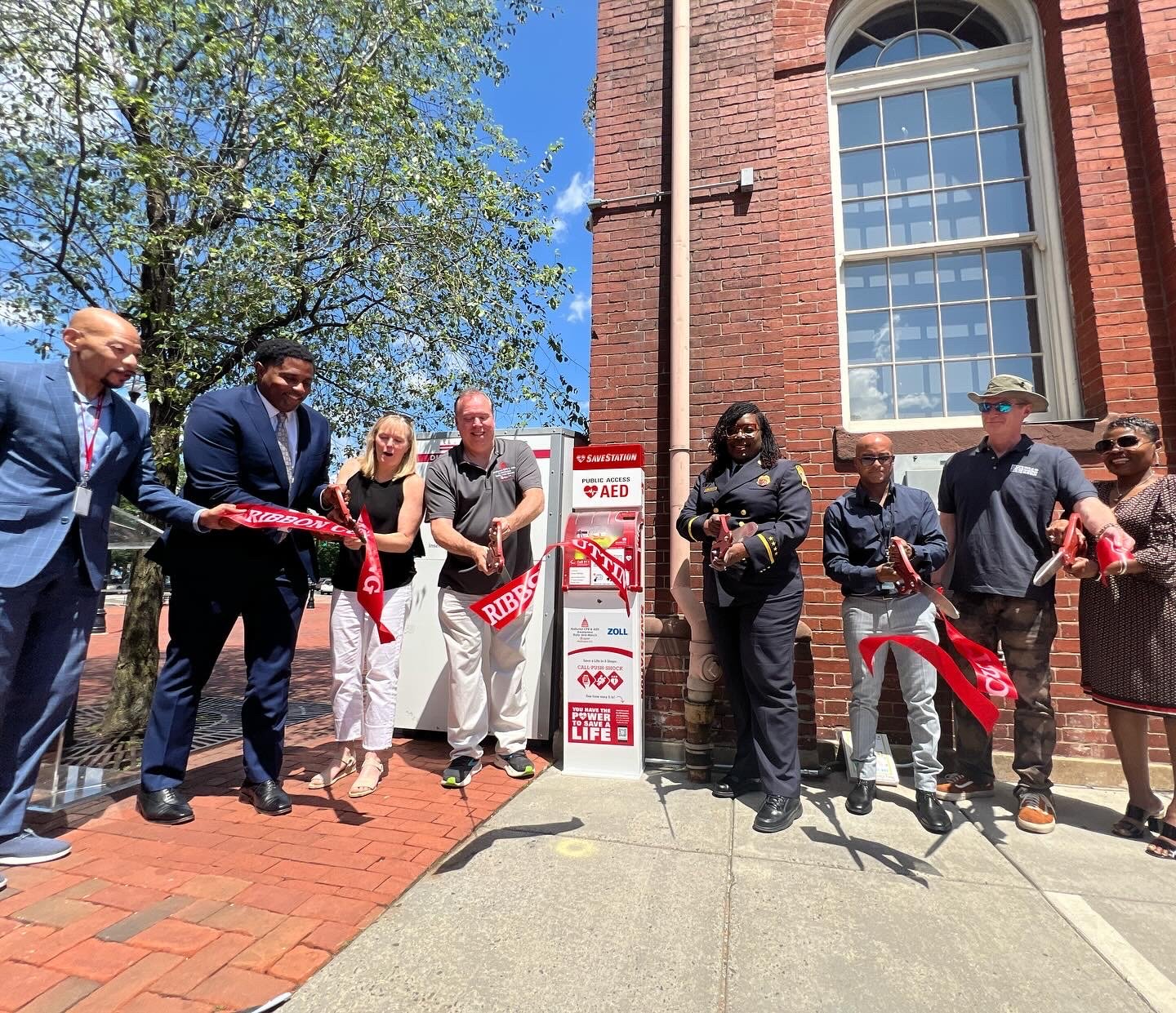
Source: HillRag.com
There’s a new feature at Eastern Market (225 Seventh St. SE) —and it could save lives.
If you turn the western corner of the North Hall towards the alley, there is a cabinet marked “SaveStation”. Inside is an automatic electronic defibrillator (AED). It is a little machine that does a big job: it helps any bystander help save a life in the case of cardiac arrest.
An AED sends an electronic signal to stimulate heartbeat in the case of emergency. Now, an AED is always accessible at Eastern Market, easy to spot in a white cabinet labelled “SaveStation,” and lit up at night.
It was placed in a partnership between non-profit Every Second Counts CPR, Zoll Medical, SaveStation and DC Fire Emergency Medical Services (DC FEMS) and DC’s Department of General Services (DGS), managers of Eastern Market. The Eastern Market SaveStation is the first to be installed in DC.
To use the SaveStation, you open the cabinet (an alarm will sound) and take out the AED. Then, just press the white power button and the machine will tell you what to do. SaveStation Partnership Manager, Katrysha Gellis, says many people feel more confident when prepared. So you can watch a video to learn how to use the AED, to prepare yourself in case you are ever in a position to save a life.
That help can be critical. According to the National Institute for Health, nearly 90 percent of people do not survive cardiac arrest when it happens outside the hospital. “It can happen to anyone, even if you do not have a heart condition,” said Gellis. The crucial thing is time. NIH research indicates that the brain can survive for up to four minutes until the heart is restarted again. After ten minutes, the chances for survival are low.
“Really it is about engaging with the public so that everyone in the public first, knows were they are,” Save Station Co-Founder Deb Henning said. “Ultimately, you have and of a 4-minute mindset so that you could get an AED within that critical window.”
People sometimes think this is something that just happens to old people, Henning said. But that isn’t always the case. The first time a Save Station was used to save a life happened just outside of Seattle in June, 2022. A 13-year-old girl called Nina was in a soccer tournament at the Starfire Sports Complex in Tukwila, WA when she collapsed. Her coach called 911, and a bystander immediately started CPR while another person ran to the Save Station, Henning said. Nina had no known history of cardiac concerns.
“Nina is alive today because people like you thought about this, took the chance, put it outside and didn’t lock it up,” Henning said.
Read more at HillRag.com
